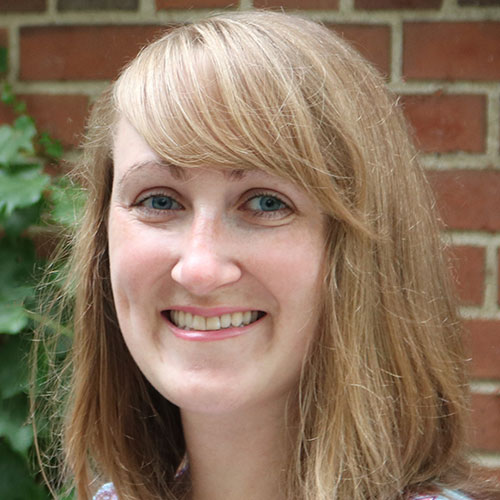Overarching GOALS
In the field of forensic document examination, there are cases where comparing a questioned document to samples from a closed set of writers is adequate –– for example, a bomb threat note found in a school that must have been written by a current student. CSAFE handwriting research aims to extend this approach to more general cases by developing assessment methods that analyze the quality of handwriting images for use in automated comparison systems. Several automated systems capable of extracting features of writing for comparison between documents are available, however, they are expensive and their algorithms are proprietary. So, CSAFE developed an open-source program called handwriter that outputs glyphs, or geometric representations of handwriting. This key resource is available to the public, and supports advancements in CSAFE handwriting analysis research.
Looking for
WEBINARS,
Short courses, presentations or publications
on Handwriting Analysis?
Additional Team Members
focus Areas
CSAFE built a prototype model that uses glyph frequencies derived from a questioned document using the handwriter package to estimate the posterior probabilities of authorship from among a set of writers. Expanding and enhancing this model is a high priority. We are continuing to collect standard writing samples from a large set of writers to use in this research project. The data will be publicly available to support the efforts of other researchers.
Document examiners are often asked to determine the source of a handwritten document. The type of document to which we refer includes ransom notes, faked legal documents and other such documents, where the information about the source is contained in the handwriting itself rather than in the content of the document.
At present, document examiners rely on visual comparisons and subjective assessments of the similarity between two handwriting samples. They focus on attributes such as the width and length of loops, the crossing of t’s, the overall slant of the characters and such to determine whether a specific person might have been the author of the document.
Several years ago, a proprietary software called FLASH ID® [1] was introduced in the market. FLASH ID decomposes writing into graphical structures called graphemes, which are then clustered into a large number of deterministic groups depending on their morphology and other characteristics. From a large but closed set of reference documents, FLASH ID® selects those that are most like a question document using a set of quantitative criteria.
Researchers in CSAFE have produced a different program for the analysis of handwriting that is in the public domain. Handwriter, like FLASH ID®, decomposes writing into graphical structures called glyphs but uses a different set of rules to do so. Furthermore, glyphs in a document are allocated to 40 groups using a stochastic clustering algorithm called k-means, which appears to be more robust than a deterministic grouping approach. Also with a closed set of writers (that can be very large), the frequency with which a writer contributes glyphs to each group, and the attributes of the glyphs in the clusters are then used to compute the probability that anyone of the writers in the reference set may have authored the questioned document.
Initial results are promising; using a set of 90 writers recruited nationwide to participate in a study organized by CSAFE, we were able to correctly establish authorship of a questioned document with about 98% accuracy. At present, authorship is established if the posterior probability of writership is 0.9 or higher.
While there are many cases in which comparing a questioned document to samples from a closed set of writers is adequate (e.g., a bomb threat note found in a school that must have been written by an unknown student in the school), extending this approach to the more general case is an objective of the work we propose here. We also aim to explore the effect of image quality on the results of the writership determinations based on the data provided by handwriter.
Knowledge Transfer
Page 2 of 2
Statistical Analysis of Handwriting: Probabilistic Outcomes for Closed-Set Writer Identification
Type: Presentation Slides Research Area(s): Handwriting
Published: 2020 | By: Amy M. Crawford
The goal of this presentation is to provide insights into features of handwritten documents that are important for statistical modeling with the task of writer identification.
A database of handwriting samples for applications in forensic statistics
Type: Publication Research Area(s): Handwriting
Published: 2020 | By: Amy Crawford
Handwriting samples were collected from 90 adults for the purpose of developing statistical approaches to the evaluation of handwriting as forensic evidence. Each participant completed three data collection sessions, each at least three weeks apart. At each session, a survey…
Pattern Evidence Research in CSAFE-An Update
Type: Webinar Research Area(s): Bloodstain,Firearms and Toolmarks,Footwear,Handwriting,Latent Print
CSAFE is a NIST Center of Excellence in Forensic Science. A large portion of CSAFE’s research portfolio is on what is known as pattern evidence, which encompasses any evidence that can be represented as an image. Examples of pattern evidence…
Statistical Analysis of Handwriting for Writer Identification
Type: Presentation Slides Research Area(s): Handwriting
Published: 2019 | By: Amy Crawford
This presentation overviews the use of a statistical model to provide probabilistic statements of writership for handwritten documents.
Assessing the complexity of handwritten signatures
Type: Publication Research Area(s): Handwriting
Published: 2018 | By: Hal S. Stern
The complexity of a handwritten signature is a key factor in the ability of forensic document examiners (FDEs) to determine whether a questioned signature is genuine or a simulation. Examiners are likely to offer stronger and more reliable conclusions in…
Page 2 of 2
COMMUNITY CALL-TO-ACTION
Want to collaborate with CSAFE on a project. Contact us to share your idea.




